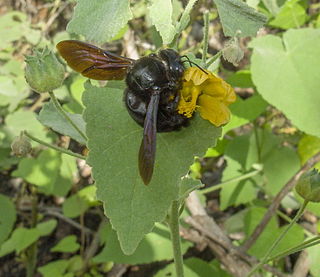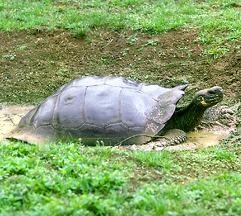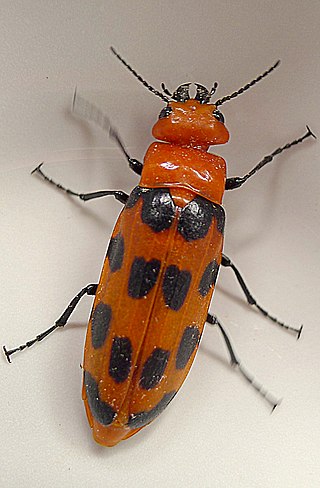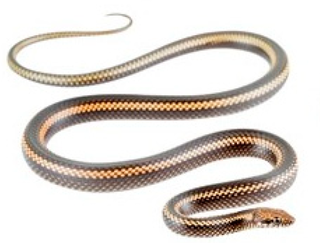Nesoryzomys darwini, also known as Darwin's nesoryzomys or Darwin's Galápagos mouse, is an extinct species of rodent in the genus Nesoryzomys.

The Galápagos Islands xeric scrub, also known as the Galápagos Islands scrubland mosaic, is a terrestrial deserts and xeric shrublands ecoregion that covers the Galápagos Islands. The Galápagos Islands are volcanic in origin, and remote from continents and other islands. The ecoregion is well known for its unique endemic species, including giant tortoises, birds, and marine iguanas, which evolved in isolation to adapt to islands' environments.

The Galápagos tortoise or Galápagos giant tortoise is a very large species of tortoise in the genus Chelonoidis. The species comprises 15 subspecies. It is the largest living species of tortoise, with some modern Galápagos tortoises weighing up to 417 kg (919 lb). They are also the largest extant terrestrial ectotherms.
Darwini, a New Latin adjective that commonly refers to Charles Darwin, may refer to:
Coleophora darwini is a moth of the family Coleophoridae. It is found on the Galápagos archipelago where it has been collected on Pinzón, Española, and Pinta islands.

Pseudalsophis is a genus of snakes in the family Colubridae. The genus is endemic to South America. Out of the ten species, nine are endemic to the Galapagos Islands.
Calosima darwini is a moth in the family Blastobasidae. It is found on the Galapagos Islands.

Xylocopa darwini, the Galápagos carpenter bee, is the only native species of bee in the Galápagos Islands, to which it is endemic. Altogether, only three species of bee are found in the islands. This species found on 75% of the largest islands. It is sexually dimorphic and is known for its complex behavior. As the only native bee, Xylocopa darwini serves as an important primary pollinator within the plant-pollinator network of the archipelago.

The Galápagos racer is a colubrid snake in the genus Pseudalsophis that is endemic to the Galápagos Islands. It is a mildly venomous constrictor but it is not considered aggressive or harmful to humans. The two subspecies are the eastern and western racers, the latter being larger, longer, and darker than the former. The western subspecies specializes in hunting fish, while both subspecies eat small reptiles, eggs, rodents, and bird hatchlings. The Galapagos racer is near threatened due to recently introduced species that feed on snake eggs, including pigs, rats, mice, and cats. It is one of only three species of snakes on the Galápagos Islands, and it was first described in 1860. In November 2016, a video clip from the BBC series Planet Earth II showing a group of Galápagos racers hunting marine iguana hatchlings became a viral trend.
Darwin's leaf-toed gecko is a species of lizard in the family Phyllodactylidae. The species is endemic to San Cristóbal Island in the Galapagos.

The Santiago Island giant tortoise, also known commonly as the Santiago giant tortoise and the James Island tortoise, is a subspecies of Galápagos tortoise in the family Testudinidae. The subspecies is endemic to Santiago Island in the Galápagos.
Pseudalsophis thomasi, or Thomas' racer, a species of snake in the family Colubridae. It is endemic to several islands in the Galápagos group.

Scolopendra galapagoensis, also known as the Galápagos centipede and Darwin's goliath centipede, is species of very large centipede in the family Scolopendridae. It is the only representative of the genus Scolopendra on the Galapagos Islands, among twelve other species of centipede present on the Islands. It is also found on mainland South America in Ecuador and Peru, and on Cocos Island in Costa Rica.

Cissites maculata is a species of blister beetle that lives in the Neotropical realm.

Pseudalsophis dorsalis, otherwise known as the Central Galapagos racer or the Santa Cruz racer is a species of snake of the family Colubridae.

Pseudalsophis hephaestus, otherwise known as the Santiago racer, is a species of snake of the family Colubridae.

Pseudalsophis hoodensis, otherwise known as the Espanola racer, is a species of snake of the family Colubridae.

Pseudalsophis slevini , the Banded Galapagos snake or Pinzon racer, is a species of snake of the family Colubridae. It is named for Joseph Slevin, a curator at the California Academy of Sciences.

Pseudalsophis steindachneri , the Striped Galapagos snake, is a species of snake of the family Colubridae. It is named after Franz Steindachner, an Austrian zoologist, ichthyologist, and herpetologist who published over 200 papers on fishes and over 50 papers on reptiles and amphibian species.












